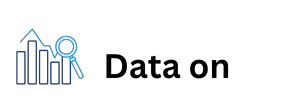Users’ attention is becoming the most valuable resource, and in the world of digital noise, it is important to capture it as quickly as possible. Therefore, everyone tries to stand out and attract and retain visitors to the site as effectively as possible – for example, with the help of widgets.
Widgets help add interactivity
increase the time a person spends on a page, and reduce the number of bounces – when a visitor closes the site in the first seconds of interaction. All this has a positive effect on conversion and increases sales.
What is a widget
Widgets are usually small blocks or modules that are added to a site to improve india mobile number data functionality and user experience, as
well as to attract and retain attention.
They usually perform one function: remind about an event, tell about a discount, encourage subscribing to a newsletter. They are also used to collect contact information.
Feedback widget on the main page of REES46
We often come across widgets on our phones: clocks and timers, step trackers, music app icons.
One of the key advantages of widgets is their flexibility and versatility. They are great for various platforms and CMS. Any developer, regardless of experience, can easily add widgets to a product.
Ease of setup allows you to test different hypotheses: change the location, design, text and format. In a short time, you can find an option that will appeal to the target audience.
Widgets can perform different tasks. Some of them are designed to display additional information: weather, calendar, and so on. Others are for interacting with users, for example, comments or feedback forms. There are those that allow you to share elements from social networks, display video or audio content.
An important condition
for the effectiveness of a widget is that it must be adapted for different social media tricks to grow your list in devices to provide a high-quality.
User experience on both a desktop and a smartphone.
What types of widgets are there
All widgets can be divided by type, kind and location. By type, they are divided into:
Informational. Contain data on weather, news, exchange rates and other current events.
Communicative. Includes feedback loan data forms, support chats, comments and callbacks.
Social. Allow users to share content on social networks or view a company profile.
Multimedia. Video and audio players, image galleries, sliders.

